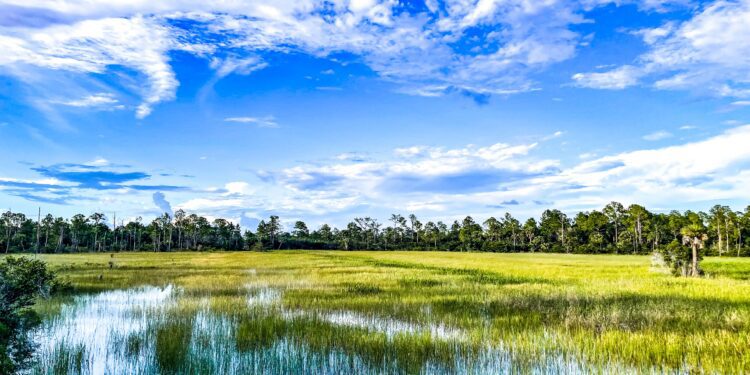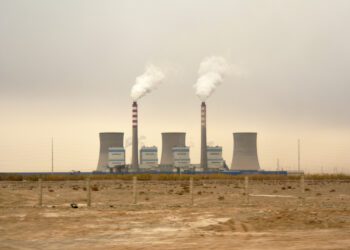Louisiana’s coast is under threat as a quarter of the state’s wetlands, an area about the size of Delaware, have disappeared in the last 100 years, according to the U.S. Geological Survey.
The wetlands are a critical buffer that shield Louisiana communities from monster hurricanes.
It’s been 20 years since Hurricane Katrina exposed the extent of the state’s coastal erosion. It was the largest residential disaster in U.S. history, killing more than 1,300 people and displacing one million others across the Gulf Coast, according to the Louisiana independent research nonprofit The Data Center.
Since Katrina, satellite images from the NASA Earth Observatory show that the Louisiana coastline has lost even more marshland — an estimated 200,000 acres, according to the USGS.
Land loss is caused by a number of factors, including sea level rise, shipping channels, levees, natural subsidence, invasive species and severe storms, according to Restore the Mississippi River Delta.
Without the protection of wetlands, Maloz and Renfro say the future would be unsustainable for coastal Louisiana communities.
“I think that’s a future we don’t want to think about,” Maloz said of the impact on the region if the wetlands were to disappear.
“It is a loss of culture,” Renfro said. “It is a loss of place and it is a loss of home for a lot of people.”
Last month, Louisiana officials canceled a $3 billion project — known as the Mid-Barataria Sediment Diversion — that sought to rebuild the marshes.
Renfro and Maloz spent years planning the diversion project with other state and federal leaders and scientists. The project was unique, because instead of a human-made marsh built by dredged sediment, it would have diverted sediment flowing down the Mississippi River to naturally rebuild wetlands, the way the Mississippi River Delta was first formed centuries ago.
Renfro and Maloz saw it as the best solution to save Louisiana. They argue that other projects wouldn’t be nearly as effective, nor would they have rebuilt as much land.
“If you don’t change the forces that took that away from you in the first place… if you don’t have a systemic change, then you’re going to lose this too,” Maloz said. “And so that’s what Mid-Barataria represented. It represented that systemic change that returned back to how we were created that gave us that long-term future. If you want to talk about dollars and cents, you’re talking about investing money over 50 years, rather than investing X amount of money over 10 years or 20 years. But really it’s the time and scale.”
The project would have diverted Mississippi sediment to rebuild 17,000 acres of land over the next 30 years, enough to potentially absorb up to 10 feet of storm surge, according to Restore the Mississippi River Delta.
Read the full article by Kati Weis / CBS












